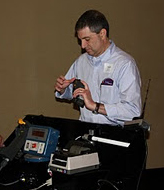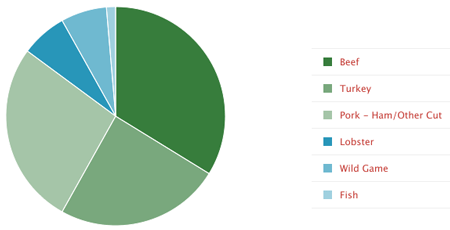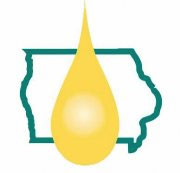Nearly 108 million gallons of biomass-based diesel were sold during the month of November, continuing a record year of production, according to figures released by the EPA. Biodiesel makes up the vast majority of the EPA’s biomass-based diesel category under the Renewable Fuel Standard program, representing about 95 percent of the volume this year.
 In a news release from the National Biodiesel Board, biodiesel production specifically had reached an all-time high 908 million gallons through the end of November. The previous annual record for biodiesel production was 690 million gallons in 2008.
In a news release from the National Biodiesel Board, biodiesel production specifically had reached an all-time high 908 million gallons through the end of November. The previous annual record for biodiesel production was 690 million gallons in 2008.
Biodiesel is produced in nearly every state in the country and is on pace to support more than 39,000 U.S. jobs in 2011 while replacing roughly 1 billion gallons of petroleum diesel. Made from an increasingly diverse mix of resources such as agricultural oils, recycled cooking oil and animal fats, it is the first and only commercial-scale fuel produced across the U.S. to meet the EPA’s definition as an advanced biofuel. Biodiesel can be used in existing diesel engines and meets strict specifications of ASTM D6751.


 GROWMARK Information Management Solutions director Keith Milburn says wEBS was developed as a fuel billing solution that makes the record keeping process easier by providing instantaneous information such as fuel type, tank sizes, taxes and credits.
GROWMARK Information Management Solutions director Keith Milburn says wEBS was developed as a fuel billing solution that makes the record keeping process easier by providing instantaneous information such as fuel type, tank sizes, taxes and credits.  “There’s two components of wEBS,” Milburn says. “There’s the back office or centralized data set and then the hand held on the truck level.” The back office includes not only customer information, but every tank that each delivery truck services. “The system identifies each tank with a bar code that tells who the customer is, what product types, relevant taxes, discounts, and if there have fuel contracted at a certain price,” Milburn explains. So all the delivery driver has to do is pump the fuel and within minutes the transaction is recorded and an email confirmation is sent to the customer.
“There’s two components of wEBS,” Milburn says. “There’s the back office or centralized data set and then the hand held on the truck level.” The back office includes not only customer information, but every tank that each delivery truck services. “The system identifies each tank with a bar code that tells who the customer is, what product types, relevant taxes, discounts, and if there have fuel contracted at a certain price,” Milburn explains. So all the delivery driver has to do is pump the fuel and within minutes the transaction is recorded and an email confirmation is sent to the customer. “EPA has essentially reduced the mandate for cellulosic, recognizing the fact that there aren’t supplies out there to meet it,” said USDA chief economist Joe Glauber.
“EPA has essentially reduced the mandate for cellulosic, recognizing the fact that there aren’t supplies out there to meet it,” said USDA chief economist Joe Glauber. 



 After
After  Ethanol industry developments in 2011 have set the stage for a new era. The
Ethanol industry developments in 2011 have set the stage for a new era. The  In this edition of “The Ethanol Report,” Renewable Fuels Association president and CEO Bob Dinneen comments on the year in review and some of the top ethanol stories of 2011.
In this edition of “The Ethanol Report,” Renewable Fuels Association president and CEO Bob Dinneen comments on the year in review and some of the top ethanol stories of 2011. Biodiesel consulting firm
Biodiesel consulting firm  Lee notes that the group’s current appraiser, environmental expert, QA experts, and grant writers have backgrounds and experience in these areas, and that the group’s larger strategic partners – Stoel Rives (legal), Christianson & Associates (accounting), IMA of Kansas (insurance), FCStone Merchant Services (feedstock financing), and Executive Leadership Solutions (staffing) – already have very significant presences in these other alternative fuels sectors. “Our goal over the past several years has been to put together a top notch team of the best biodiesel experts in the world”, says Lee. “I am quite satisfied that we have accomplished that goal and now address almost every need in the biodiesel sector.”
Lee notes that the group’s current appraiser, environmental expert, QA experts, and grant writers have backgrounds and experience in these areas, and that the group’s larger strategic partners – Stoel Rives (legal), Christianson & Associates (accounting), IMA of Kansas (insurance), FCStone Merchant Services (feedstock financing), and Executive Leadership Solutions (staffing) – already have very significant presences in these other alternative fuels sectors. “Our goal over the past several years has been to put together a top notch team of the best biodiesel experts in the world”, says Lee. “I am quite satisfied that we have accomplished that goal and now address almost every need in the biodiesel sector.”